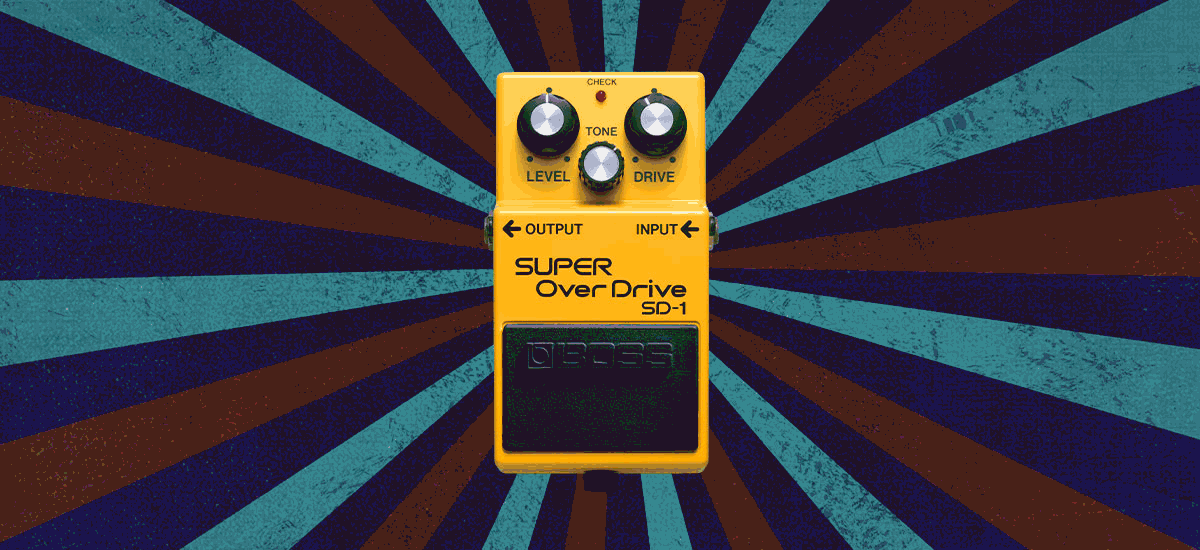A Pedal Pre-History
It wasn’t always easy adding effects pedals to a guitar rig. In 1946, Rowe Industries debuted the first commercially available, standalone guitar pedal. The DeArmond Trem-Trol was a primitive technology hog. It produced its tremolo effect by running an input signal through a water-based electrolytic fluid. At the same time, an electric motor drove a spindle up and down to create signal fluctuations. This resulted in the volume modulation for the tremolo. Quite a process.
Happily, for the future stompbox-obsessed multitudes, Bo Diddley used the Trem-Trol on his self-titled, smash hit in 1955. This paved the way for decades of guitarists looking to enhance their sounds with floor-based effects devices. When transistors made the scene in the 1960s, things transformed. Manufacturers could transform delicate, often cumbersome, pedals into the affordable units we adore.
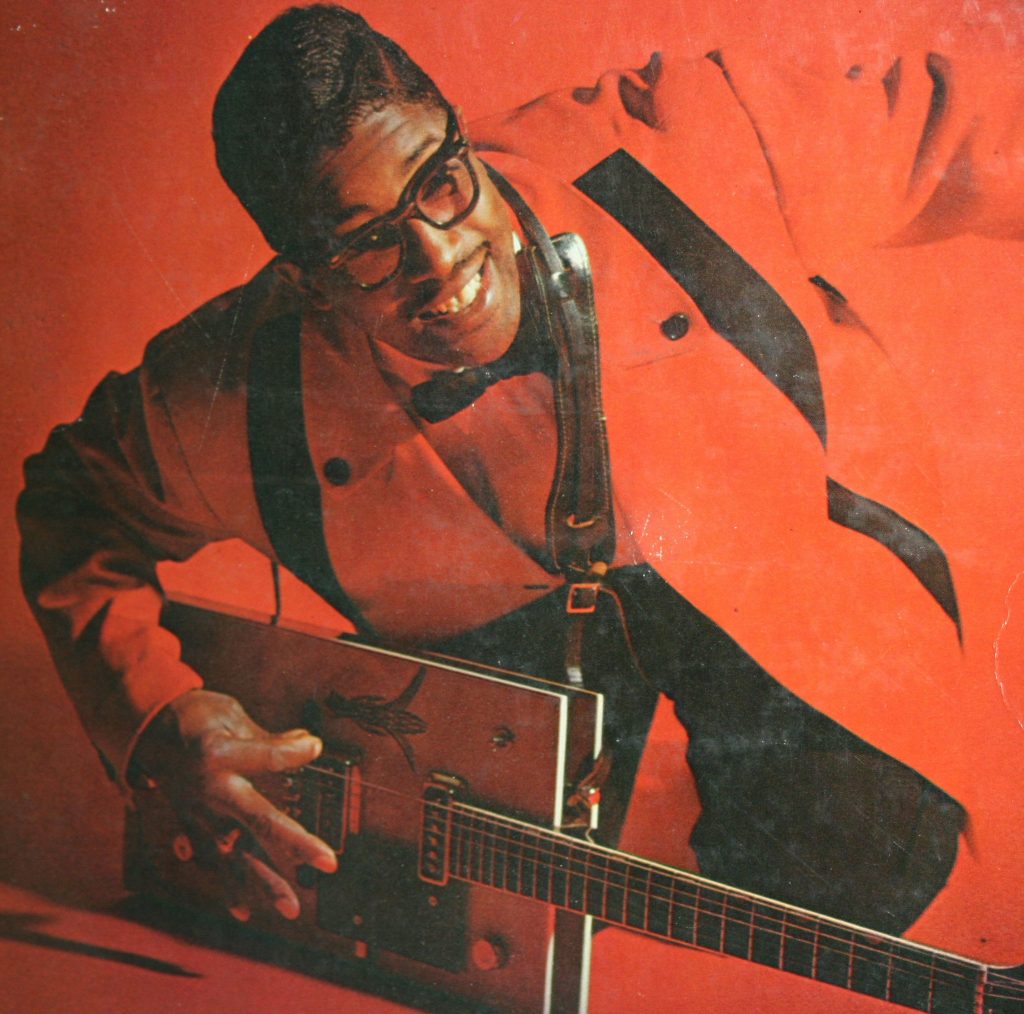
"When transistors made the scene in the '60s, manufacturers could transform delicate pedals into the affordable units we adore."

Transistor to the Rescue
Thanks to that mini marvel, the Gibson Maestro Fuzz-Tone became the first transistor distortion pedal in 1962. There was no parade. Few guitarists appeared to notice it at all. That all changed when Keith Richards plugged into a Fuzz-Tone to cut the riff for “(I Can’t Get No) Satisfaction” in 1965. Boom—everybody wanted one. ’60s music pushed the envelope for unique, exciting, and plain weird guitar sounds.
Pedals became a big part of guitarists’ collective mind-meld. By the 1970s, it was obvious floor pedals were becoming a big industry. Several now-legendary stompbox companies swooped in to meet market demand.
"The company's first compact pedals debuted in 1977. They got it so right the basic chassis design hasn't changed for 44 years."
A BOSS Enters the Pedal Game
Roland made some wild pedals during the early to mid-1970s. These included the AF-100 BeeBaa, AF-60 BeeGee, and AG-5 Funny Cat. The company formed its BOSS subsidiary in 1973 to take the reins and develop next-gen effects. Initial releases arrived in 1976, with the CE-1 Chorus Ensemble, BF-1 Flanger, DB-5 Driver, and GE-10 EQ. (Eddie Van Halen famously used the GE-10 in his early days).
These hefty effects devices would’ve gobbled up valuable real estate on touring pedalboards. A move towards miniaturization began in earnest at BOSS. The company’s first compact pedals debuted in 1977. Spoiler alert: They got it so right that the basic chassis design hasn’t changed for 44 years now.
To Josh Scott, author of Stompbox: 100 Pedals of the World’s Greatest Guitarists, pedals like the yellow OD-1 OverDrive, green PH-1 Phaser, and red SP-1 Spectrum “took it to the next level of style and class.” Scott marveled at the pedal growth spurt. “The series evolved into the likes of trading cards or action figures—’Buy them all!'” he writes. “BOSS not only had the look perfected, but they had the means to market it like no pedal company before.”
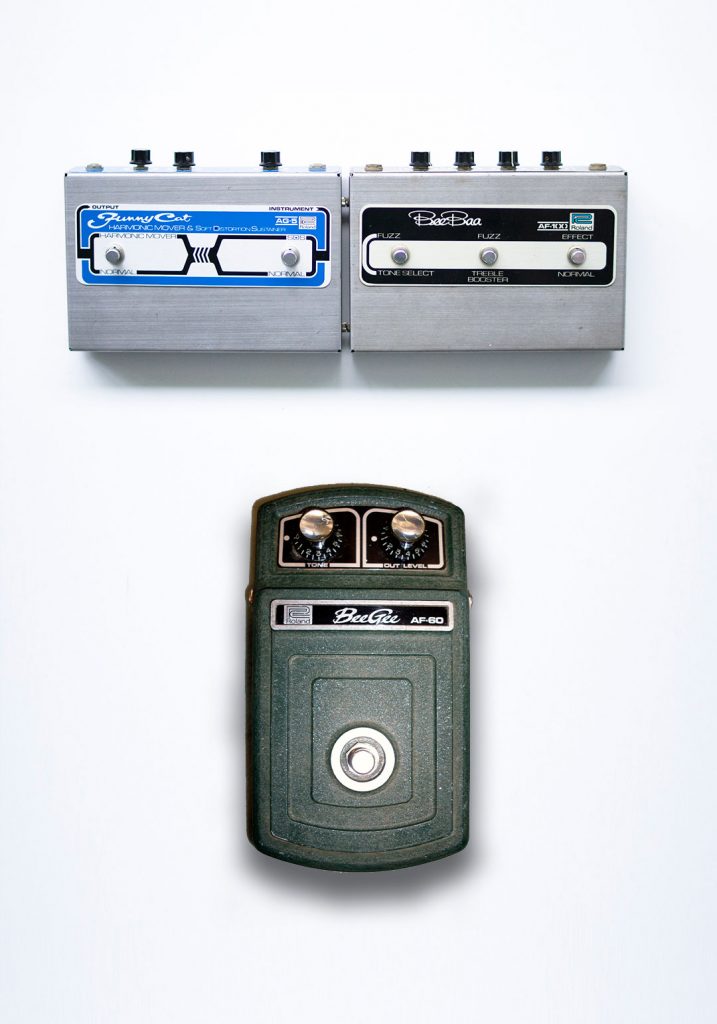
"BOSS not only had the look perfected, but they had the means to market it like no pedal company before."
-Josh Scott
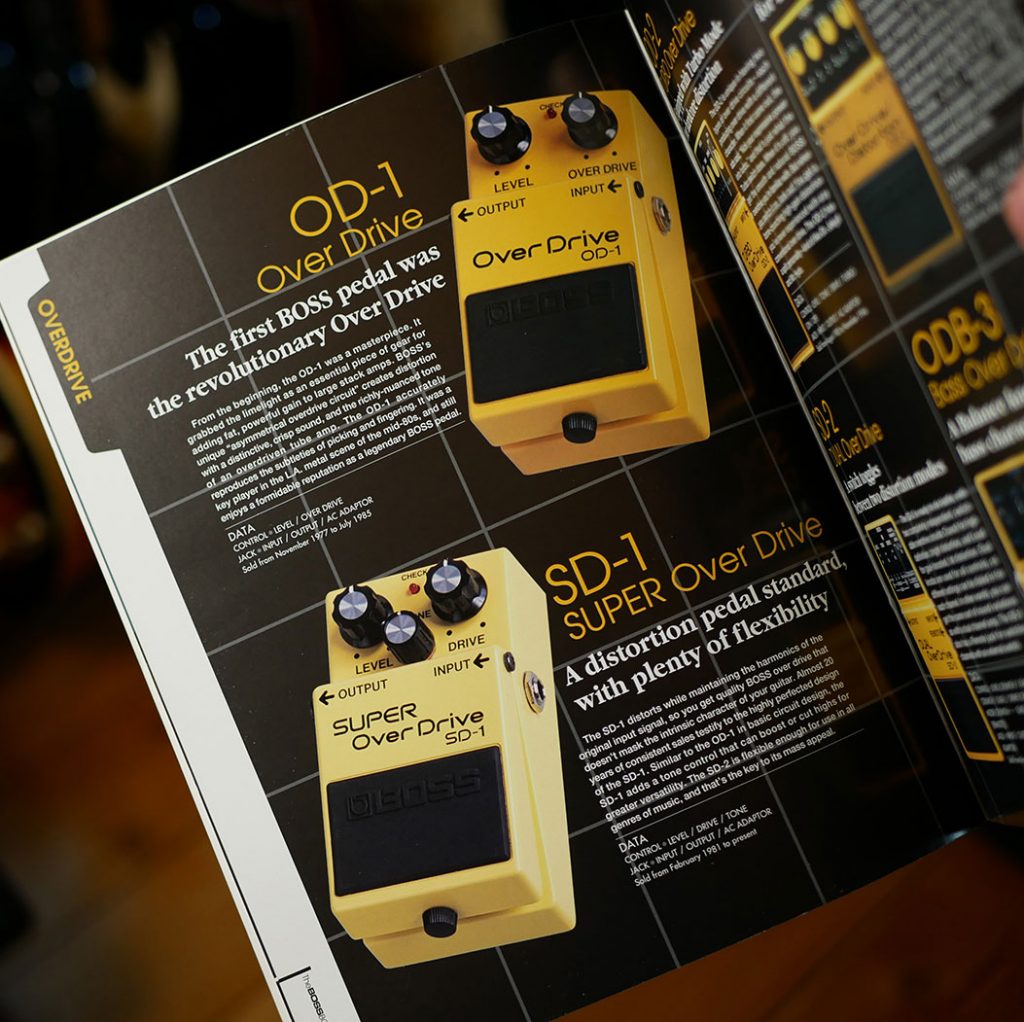
From OD-1 to SD-1
The seeds of the SD-1 Super Overdrive were sown by 1977’s OD-1 Overdrive. With just two controls (Level and Overdrive), the OD-1 became one of the first pedals to truly emulate the sound of an overdriven amp. It deployed an asymmetrical clipping circuit. This prevented the distortion of the positive and negative waveforms swings equally. The technical benefit produced a more harmonically-complex distortion tone than most pedals.
Yet, as astounding as the OD-1 was for its time, the pedal was nearing its expiration date as the ’80s unfolded. Eventually, BOSS discontinued it in July 1985. “Some felt the sound of the OD-1 was too sweet and that the frequency range was insufficient,” designer Kanji Kubo said in The BOSS Book. “This is why we added the tone control to the SD-1.”
"With just two controls, the OD-1 became one of the first pedals to truly emulate the sound of an overdriven amp."
Timeless Benefits
Besides, the pedal’s midrange boost and bass cut are wonderful tools to tighten up the sound of vintage tube amps. They can push medium-gain monsters into high-gain saturation and provide grit and sass to clean-amp tones. The SD-1’s rich roar preserves a player’s most subtle dynamic nuances. As a result, many guitarists rate it as one of the best all-around BOSS overdrive boxes.
Legendary Players Became Fans
The SD-1 certainly impressed more than a few guitar heroes.
Notable users include Eddie Van Halen, Steve Vai, Zakk Wylde, John 5, Mark Knopfler, Josh Homme, Richie Sambora, Reb Beach, and Warren DeMartini. Not to mention, Jason Becker, Kirk Hammett, Robert Smith, Jonny Greenwood, Bruce Kulick, Lindsey Buckingham, Brad Whitford, Tracii Guns, and even bassist John Paul Jones.
The SD-1 has been a frequent fixture on The Edge’s pedalboards since the latter stages of the Boy tour in 1981. More recently, it appeared in a rack during a Rig Rundown by Premier Guitar. Jimmy Page had an SD-1 during his tenure in The Firm, and David Gilmour plugged into one for his second solo album, About Face, in 1984.
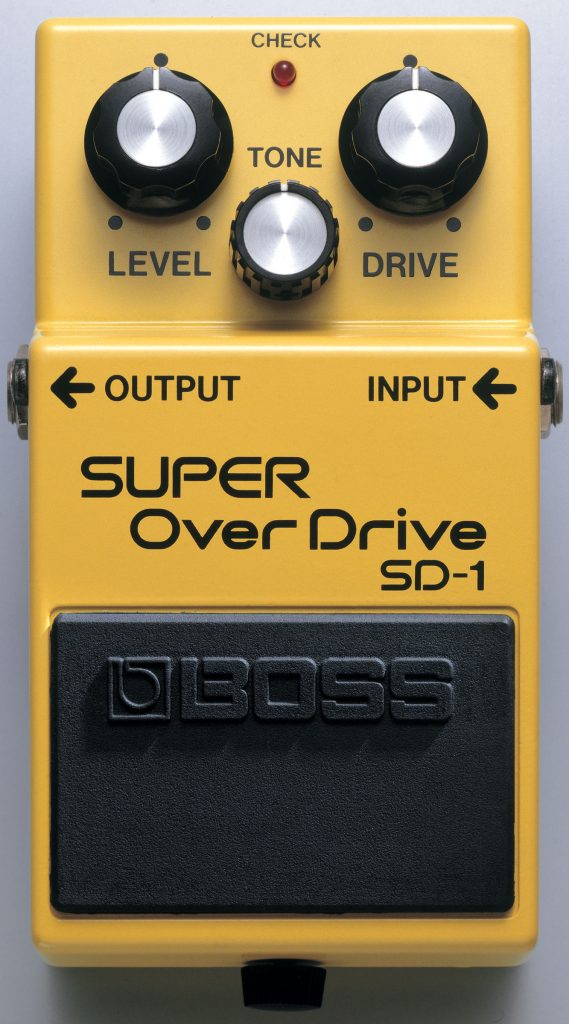
"Traveling musicians often toss an SD-1 into their gig bag. Whatever amp awaits, they'll get an organic overdrive."
Cameo Appearances
SD-1 watchers will spy the pedal in various videos. For example, you can see Jack White using an SD-1 during a White Stripes appearance on Top of the Pops in 2002. A brief view of an SD-1 appears at the side of the stage as John Frusciante played his first gig with the Red Hot Chili Peppers since 2007 on February 8, 2020.
In the “Manic Monday” music video, Prince bends down and adjusts his SD-1 during the performance. There’s a sighting of the SD-1 on Don Felder’s pedalboard for the Eagles’ 1994 Hell Freezes Over tour. Sleater Kinney‘s Carrie Brownstein’s board shows the pedal next to a BOSS BD-2 Blues Driver.
Rock Star Tricks and Travel Tips
It’s also instructive—and plain super cool—to discover how guitar stars utilize the SD-1. Sure, most players let the SD-1 circuitry do its thing. Occasionally, someone like Josh Homme comes up with a neat little trick.
Homme can be very tight-lipped about gear. Still, he revealed he likes to use the SD-1 as a kind of old-school treble booster. The Queens of the Stone/Them Crooked Vultures guitarist turns the Drive all the way down, and the Tone all the way up. Give it a shot.
More than a few pros who do a lot of “fly gigs” to television shows or benefit concerts. In these situations, the quality of the amp backline can be awesome or awful. Traveling musicians often choose to travel light by tossing an SD-1 into their guitar gig bag. The SD-1 ensures that whatever amp awaits, they’ll get an organic, “repeatable” overdrive.
A Community Favorite
Of course, it’s not just guitar superstars that have embraced the SD-1. Many journalists have selected the SD-1 for various “essential pedals” lists. Moreover, scores of players continue to use or discover the Super OverDrive. For 2014’s Guitar Player Celebrates 100 BOSS Compact Pedals, the community chose its favorites. The SD-1 came in at number six. On the question, “What was your very first BOSS compact pedal?” the SD-1 jumped up to number three.
Considering all the success and adoration, you’d think BOSS wouldn’t mess with a good thing. But they did.

"While the SD-1W owns its place in the frequency spectrum, it sounds as if you've had your amp lovingly refurbished."
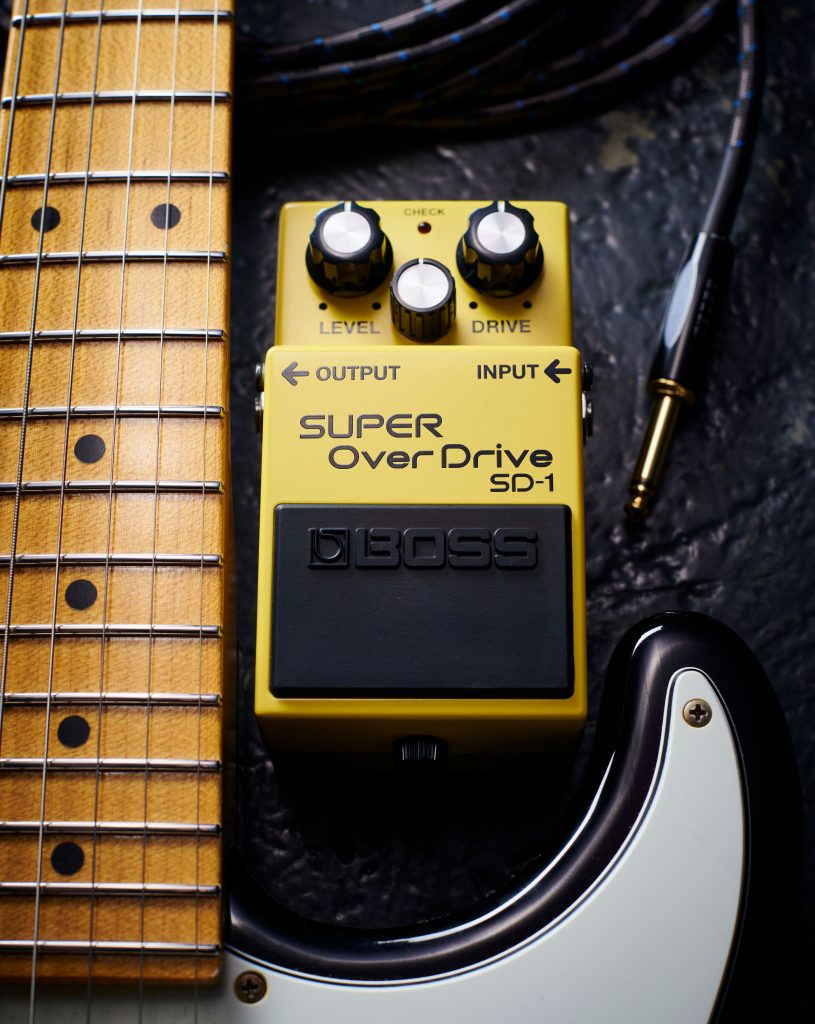
SD-1W: A Reimagined Version
In 2014, a Waza Craft version of the SD-1—the SD-1W—was released. As with all Waza Craft re-imaginings, the SD-1W is a feature-enriched, hot-rodded edition of the original. Here, the most obvious update is the inclusion of Standard and Custom modes. These offer two different qualities of the classic SD-1 sound.
Standard is pretty much what you’d assume. The mode delivers what players have been hearing since 1981. That said, there are updates to the circuitry. When compared to an SD-1, the SD-1W has a significantly sweeter and more balanced tone control. It diminishes much of the gritty high end of the original. The SD-1 always possessed a great bit of zing for cutting through band mixes. While the SD-1W still owns its place in the frequency spectrum, it sounds as if you’ve had your amp lovingly refurbished and in top form.
Waza Craft Character
Custom mode produces more warmth and less snarl, with a bounty of low end added to the signal. This comes along with a slight boost in volume level. There’s more low–end, creamy crunch, and sustain. Plus, the boosted mids of Standard mode are more sedate. You still get that punchy attack, but it’s with boxing gloves on, rather than bare knuckles.
In essence, the Waza enhancement of the SD-1 acknowledges the past few years of DIY builders. The design nods to the homegrown circuit breakers and emerging modders. These folks have been teaching old circuits new tricks. In the case of the SD-1W, it’s a case of having access to the past, while stepping into new vistas of tone.
SD-1W artists include Mike Stern, Steve Vai, John Petrucci, Billy Duffy, John 5, and KT Tunstall.
"That a 2021 SD-1 sounds, looks, and acts pretty darn close to a 1981 SD-1 is almost the stuff of miracles."

Reliability + Innovation = Legacy
Forty years is a long time for a product of any kind to remain “on the shelves.” In the pedal world, there are a few brands from the ’60s and ’70s still able to excite new disciples and old hands. But the fact that a 2021 SD-1 sounds, looks, and acts pretty darn close to a 1981 SD-1 is almost the stuff of miracles. Josh Scott puts it well in Stompbox: 100 Pedals of the World’s Greatest Guitarists.
Scott praises “BOSS’ innovations in sound and circuitry” and “timeless branding and style.” He also notes how different the company is from others that “rebrand every five or ten years.” To Scott, this longevity is a triumph in and of itself. “BOSS pedals are still virtually identical to the day they were initially released. No other company can say this. Not one.”
